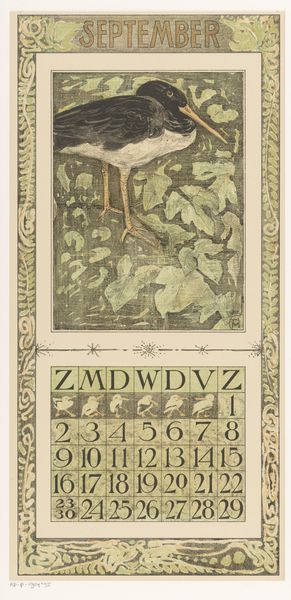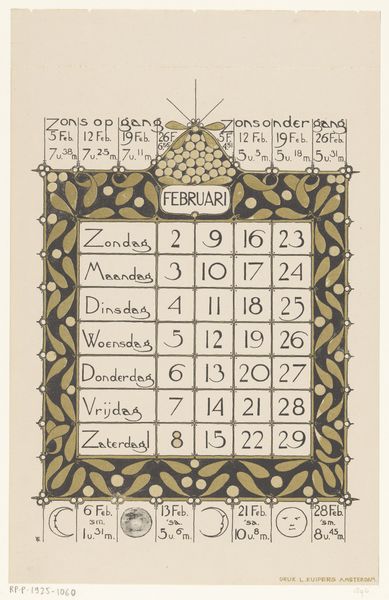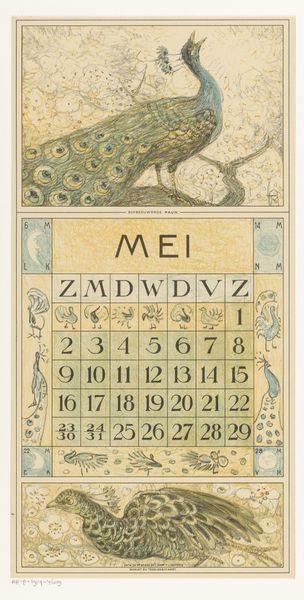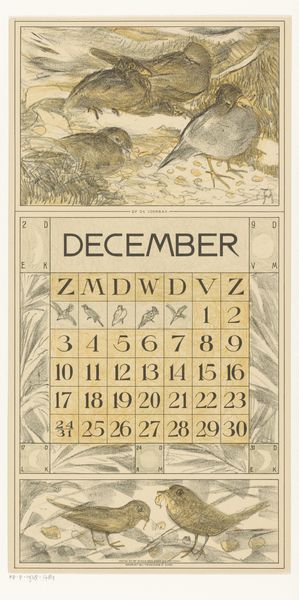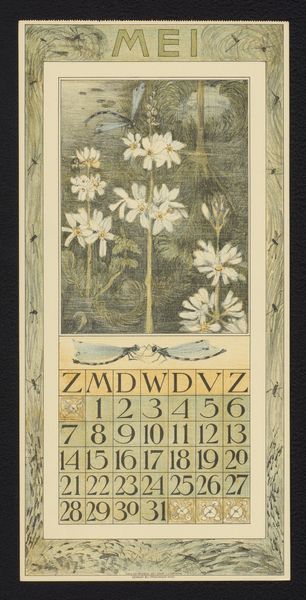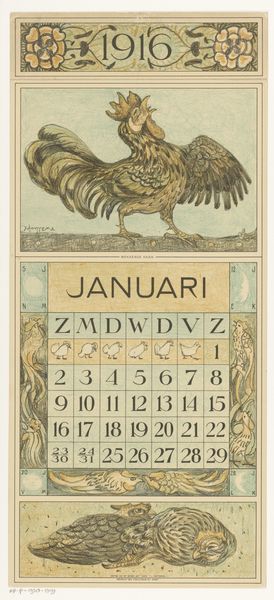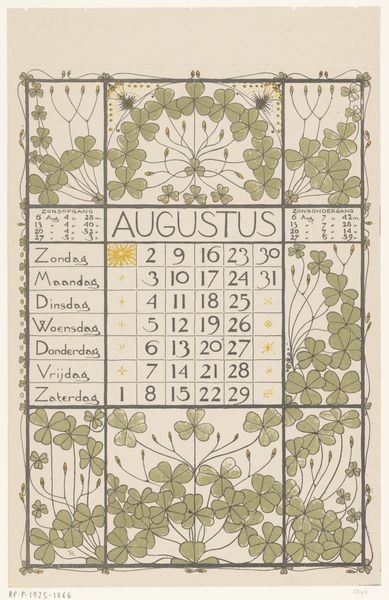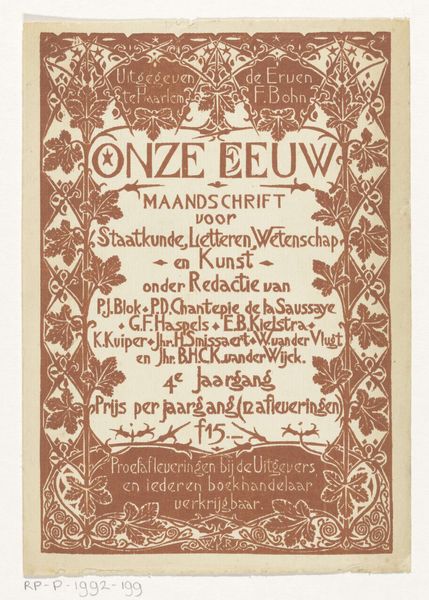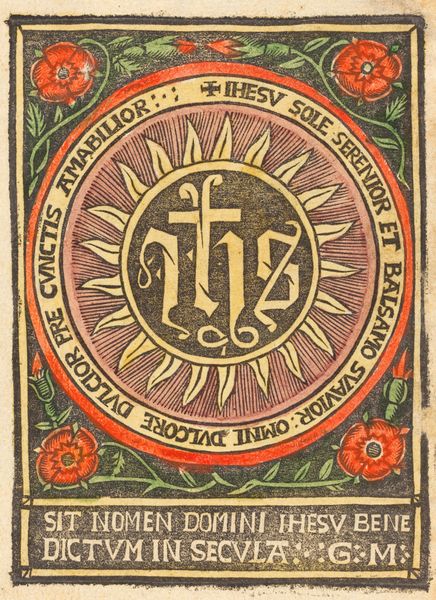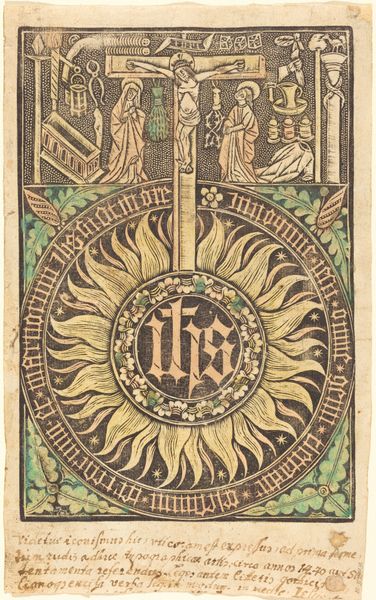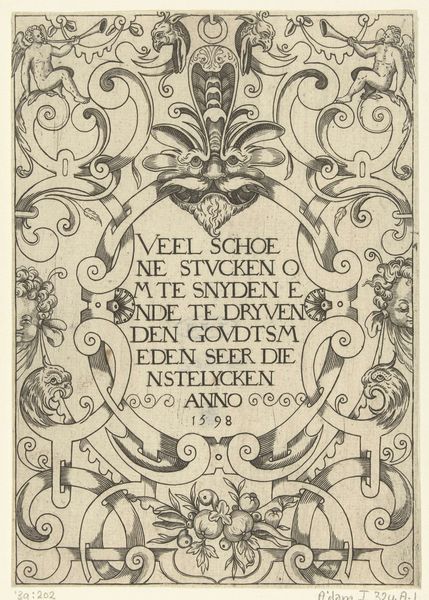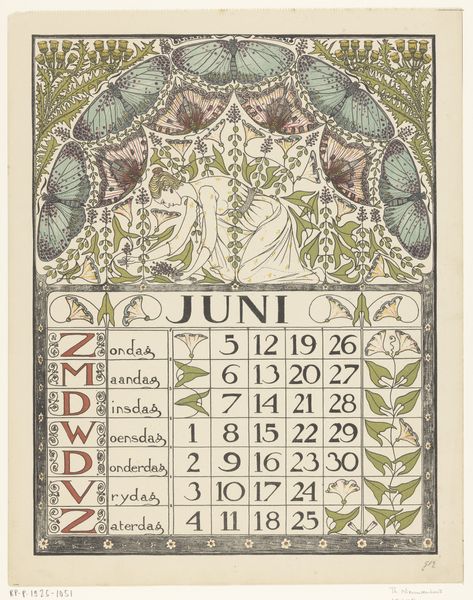
graphic-art, print, poster
#
graphic-art
#
art-nouveau
# print
#
decorative-art
#
poster
Dimensions: height 398 mm, width 282 mm
Copyright: Rijks Museum: Open Domain
Curator: Here we have Gerrit Willem Dijsselhof’s “Kalenderblad voor januari 1899,” a delightful little poster, or perhaps a print, made in 1898. What do you make of it? Editor: Oh, it’s charming! So decorative. It feels simultaneously modern and rooted in older traditions of manuscript illumination. And I love the limited palette. Restrained but somehow exuberant. Curator: Exuberant! Yes, even within that restraint, there’s a joy. The stylized leaves bordering the calendar grid feel almost like they’re dancing. This piece is very much within the Art Nouveau movement. We see it in the organic forms and the emphasis on decorative patterns. Dijsselhof was deeply interested in the synthesis of art and design, wasn’t he? Editor: Absolutely, he rejected the separation. It speaks to the political dimension of art; to how design can be brought into the domestic sphere to uplift everyday life, accessible to everyone. That green feels very deliberate given it suggests hope but could also suggest decay depending on context and how its viewed in relationship to other symbols in the work. Curator: That interplay between growth and decay is always present in Art Nouveau, isn’t it? It acknowledges life's cyclical nature and inevitable change. And calendars are such tangible records of time’s passing; they measure not just hours or days, but the seasons and the movement through the agricultural cycle. Editor: Speaking of measuring time, the placement of dawn and dusk for each day on the calendar indicates its purpose for tracking the days as well as their increasing or decreasing hours of sunlight, and to think it’s all presented and displayed in this single artwork! We might also think of time as something relational too, in so far as what January represents for a certain public then versus the current meanings, how have meanings shifted? I’d wonder whether certain populations found the tracking of sun up or down necessary due to living under differently restrictive conditions or circumstances than those who did not track these. Curator: That's such a pertinent question about how varying relationships to restriction can define the meaning we attach to art and, I agree, these design choices carry so much meaning beyond the immediate functionality. To reflect on our journey with this image: it reminds me that we all connect with art uniquely through our different, lived experiences.
Comments
No comments
Be the first to comment and join the conversation on the ultimate creative platform.
